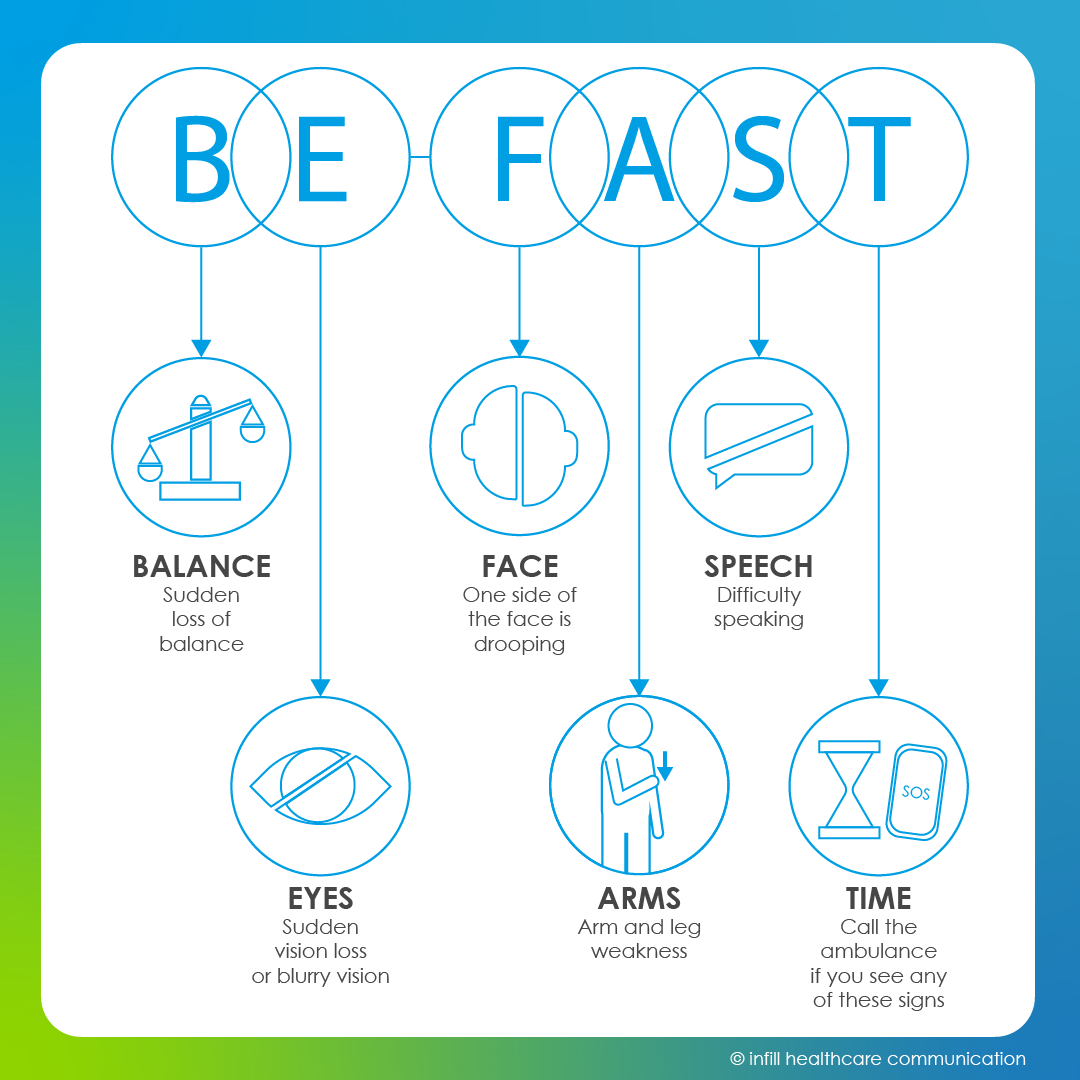How a stroke affects the entire family – World Stroke Day 2023
In the light of World Stroke Day, it’s essential to raise awareness about stroke and its impact on those affected, their loved ones, and the whole family.
As a medical writer in a healthcare agency, I see myself confronted with the topic of stroke on a regular basis. For me as an individual, stroke is more than just an abstract disease. It’s a personal experience since my grandfather suffered a stroke when I was a child. It left him partially paralysed, with significant cognitive disabilities and speech difficulties. Living next door to my grandparents, I witnessed the devastating impact of stroke on independence and quality of life first-hand and saw how it affected the whole family. Every member of our family found themselves taking on more of a caregiving role. They were suddenly responsible for scheduling appointments with doctors and therapists, assisting with grocery shopping, laundry, and various household tasks, all while contemplating an uncertain future.
According to literature, stroke is often described as a ‘family illness,’ with 54% of families reporting negative impacts on their daily lives due to a loved one’s stroke.1 This can manifest as role shifts within marriages or families, leading caregivers to transition from work and external activities to a home-centred life focused on tasks like washing, feeding, lifting, and managing daily activities.2 Additionally, dealing with a variety of strong emotions is a common aspect of coping with the aftermath of stroke, not only for the patient but also for those around.2
But there is hope: Up to 90% of strokes are preventable and the effects of a stroke on the affected individuals and the people around them can be mitigated by increasing stroke awareness.
Here are some stroke key facts that can help spread the message.
- Time is precious.3
If someone shows symptoms of a stroke, such as face drooping, arm weakness and speech difficulty, it’s crucial to call the emergency service immediately to increase the person’s chances of surviving and recovering from the stroke.

- Stroke is not just a disease of the elderly!4
It can happen to anyone, young and middle-aged adults included, at any time. Share this important fact with your family and friends and help us spread the message to raise awareness of stroke risk regardless of age.
- Recovery from stroke is often a long and challenging journey
Therefore it requires the efforts of a multidisciplinary team.5 Supporting stroke survivors and their families is essential and can help facilitate recovery from stroke and improving quality of life for those affected. - Prevention of stroke is extremely important4
While you cannot control your age or family history, lifestyle changes can help reduce the risk of stroke, such as following a healthy diet and regular exercises, treating chronic conditions, and avoiding smoking and excessive alcohol consumption. Start implementing healthy lifestyle changes today to reduce your and your loved one’s risk of stroke or talk to your healthcare team to find out what else you can do.
Overall, stroke can have a huge impact on those affected and their loved ones. However, by sharing personal experiences of the disease, we can raise awareness about the risk factors, symptoms, and appropriate actions to take in the event of a stroke, to ultimately improve outcomes for individuals and families.
If you are interested in tailoring educational materials and awareness campaigns regarding stroke care, please contact us at info@infill.com.
References:
- Daniel K., et al. What are the social consequences of stroke for working-aged adults? A systematic review. Stroke 2009;40:e431-440.
- Northcott S., et al. A systematic review of the impact of stroke on social support and social networks: associated factors and patterns of change. Clin Rehabil 2016;30:811–831.
- Saver JL. Time is brain–quantified. Stroke 2006;37:263–266.
- World Stroke Organisation (WSO). Global Stroke Fact Sheet. 2022. Available at: https://www.world-stroke.org/assets/downloads/WSO_Global_Stroke_Fact_Sheet.pdf.
- Winstein CJ., et al. Guidelines for Adult Stroke Rehabilitation and Recovery. Stroke 2016;47:e98–e169.









